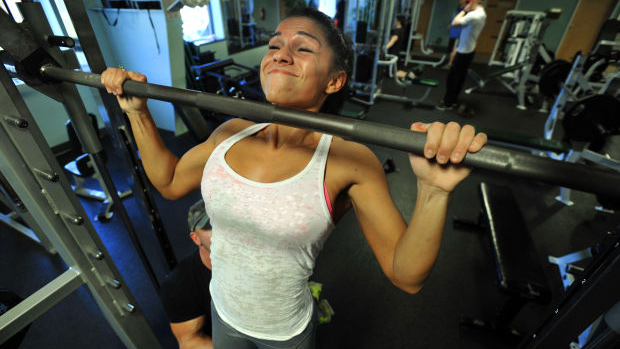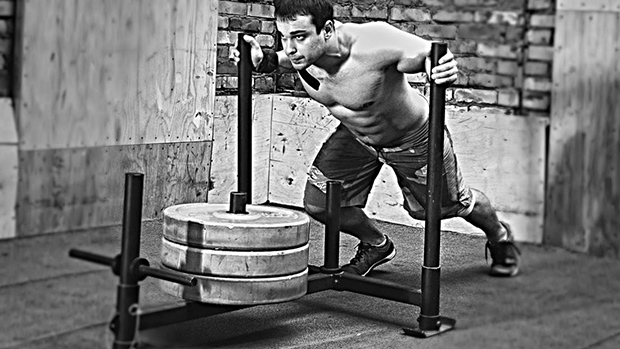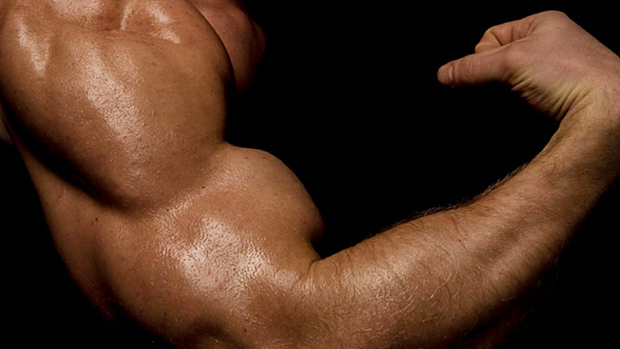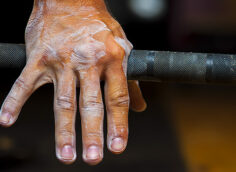"Women Can't Do Pull-Ups!"
An angry woman sent an email to the organizer of an obstacle course race claiming the event was biased against women because it required a lot of upper body strength. Here's what she should've been told:
Dear Angry Woman,
Women are perfectly capable of real push-ups and pull-ups. You, in particular, are not. This is not due to a lack of inherent ability, but a lack of effort caused by an underlying assumption that you are weak, frail, and deserve to be treated as a physical less-than. You are doing a disservice to your entire gender by maintaining your own false double standard and lobbying to uphold it rather than working to realize the physical strength that you are actually capable of. Go apologize to your daughters.
We have gyms full of women who can easily knock out sets of unassisted pull-ups with better form than the average male. They're not superhuman, they're just aware of their true physical capability and are surrounded by others like them. They may have grown up hearing about how weak and incapable they are, but at some point they stopped believing it and started proving that assumption wrong.
The truth is, few people of either gender can do pull-ups. A shitty pull-up isn't a pull-up. It's something else. And what many males are doing in the gym is something other than a pull-up. The pull-up is an honest movement, meaning that you can't really fake your way through it. Either your chest gets to the bar or it doesn't. Either you have to kip like a deranged mackerel or you don't.
Generally, females will start out with less upper-body strength than males, and different perceptions of their capabilities. This doesn't mean they're not capable of pull-ups. It means they're less likely than males to do them without intelligent coaching, consistent training, and a good training environment. So let's get started.
With pull-ups, you're looking at what the upper arms, shoulder blades and ribcage are doing. Pull-ups are essentially training the opposite motion of an overhead press. Starting from the dead-hang at the bottom, you want to see the shoulder blades start out rotated upward. As you pull, they'll begin rotating their way down while the shoulder capsule stays balanced from front-to-back.
Your upper arms should roughly start and stop moving at the same time as the shoulder blades. Just as the shoulder blades lock into place at the bottom of the movement, the upper arms will lock out with the elbows finishing in line with or just behind the ribs. This will put the bar right at your chest.
Full range of motion is important. You want to see that the shoulder blades are rotating fully upward in the dead-hang position, and that they're locking tightly together and down at the finish of the pull-up. In a standard pull-up (palms facing away from you) your hands will be just outside your shoulders. It's common for people to struggle with the last inch or two of scapular depression, and to finish their pull-ups with their shoulder blades shrugged slightly upward towards their ears. You'll often see this happen with people who have chronically tight upper traps or tend towards compensated accessory breathing and tighten their neck up under stress.
The inability to get full downward rotation in a pull-up is tied into a bigger pattern that could be problematic. So remember, the way you train this movement doesn't happen in isolation. It's tied into your posture, respiration, and movement patterns in everything else too. So get that last bit of range of motion, and finish with your upper back locking your shoulder blades down, not your pecs. It's important.
People often have relatively more strength and tension in their chest than they do in their upper backs. There are also respiratory mechanics at play here, driven by the way your thorax moves when you breathe. Often, people are stuck in a spinal extension pattern which impairs upper chest expansion during inhalation, and the result is a collapsed chest and short, tightened chest muscles, with the opposite happening in the upper back.
When this happens and the upper chest can't expand, the pecs contribute relatively more of the force to pull the shoulder blades downward, and the shoulder blades get pulled apart and forward as they come down. Essentially, it's doing pull-ups with your chest. We call these "squirrel pull-ups" and they're an injury waiting to happen. Don't get stuck here.
If you're struggling to pull vertically without your shoulders kicking forward, spend some time working on clean horizontal pulling with things like single-arm rows or inverted ring rows before you get into vertical pulling movements. You may also need some ribcage positioning work to get good movement on your rowing movements. Once you build strength there, it'll be much easier to do a squirrel-free pull-up.
To add pull-ups to your workout, do them first before the rest of your upper body strength lifts, after your warm-up. Keep the reps low, from 1 to 3 at a time, and focus on perfect movement quality rather than fatigue. Frequency and good motor patterns matter more than beating yourself up in a single workout. Do it well before you do it a lot.
Pull-up variations should be included in almost any training program. Here are some guidelines to help you work pull-ups or their progressions into any workout you're doing.
The first step towards a good pull-up is to focus solely on horizontal pulling and learn to do a rowing motion with your shoulder blades locked cleanly together and down at the finish, no forward translation of your shoulder capsules. Horizontal pulls are often easier to scale and control, so that you can train with consistently successful outcomes – all the performance points are happening with each rep. Success here will establish the foundation that good pull-ups are built on in the future.

Horizontal pulls will help strengthen your upper back and train a very similar pattern to the lockout on a pull-up. You can progress ring rows by changing your foot position or elevating your feet on a box. The higher your feet and the closer your shoulders are to being straight below the anchor points of the rings, the harder the movement will be. A single-arm dumbbell or kettlebell row is also a good horizontal row and may be a better starting point for some people.
Correct vs. Incorrect One-Arm Rows
The cool kids call it "hang and pack." This movement will improve your grip and help you get stronger from the dead-hang position to help with full range-of-motion pull-ups. Hang from the bar and pull your shoulder blades down and together without moving your arms. Hold for a few seconds then let go of the pack and let your shoulders relax and stretch. Repeat for reps and work towards increasing the sets/reps that you do.
The "Hang and Pack" Method:/h4>
Jump up from a box or chair and hold yourself above the bar. Lock your shoulder blades together and down with your chest to the bar for a perfect lockout. Very slowly lower yourself down to the dead hang position. Work toward a 10-second lowering phase.
Negative Chin-Ups
Wrap a band around the bar. Place your foot through the loop and the band will assist you in your pull. Remember to start in a dead hang on the bottom, pull up until your chest touches the bar, and don't swing your legs. Once you can do 5 consecutive reps with a band, it's time to move down to a lighter sized band or to bodyweight pull-ups. This is going to make it harder again. You may only be able to do 1 or 2 now. Do as many as you can in your progression before going back into your previous band.
Band Assisted Pull-Ups
Regardless of gender, few people do pull-ups well. And like squats, most who think they're doing them right are only about halfway there. But with the right progressions almost anyone – male or female – is capable of doing good pull-ups with a few months of training. You have what it takes. Most do, eventually.





